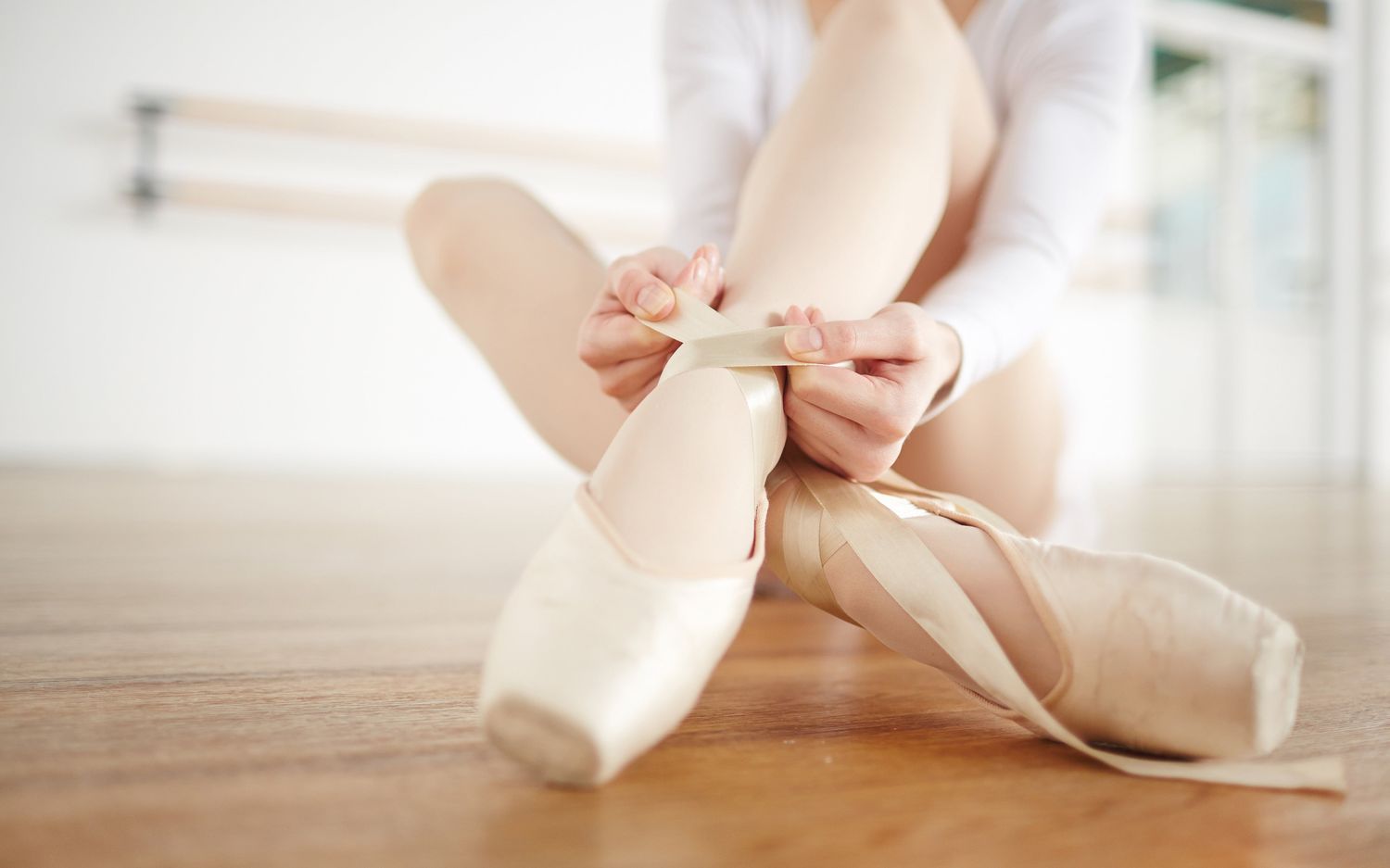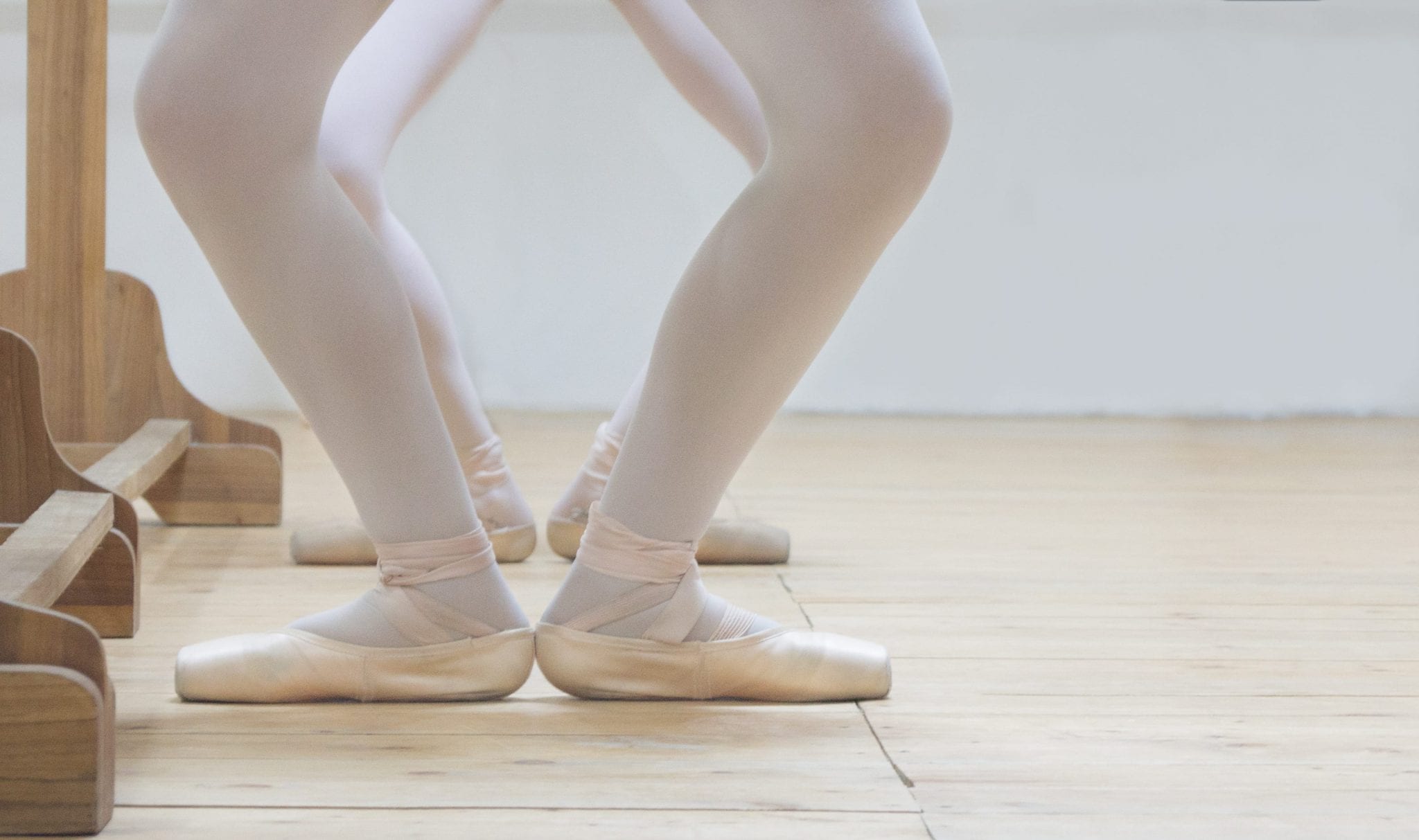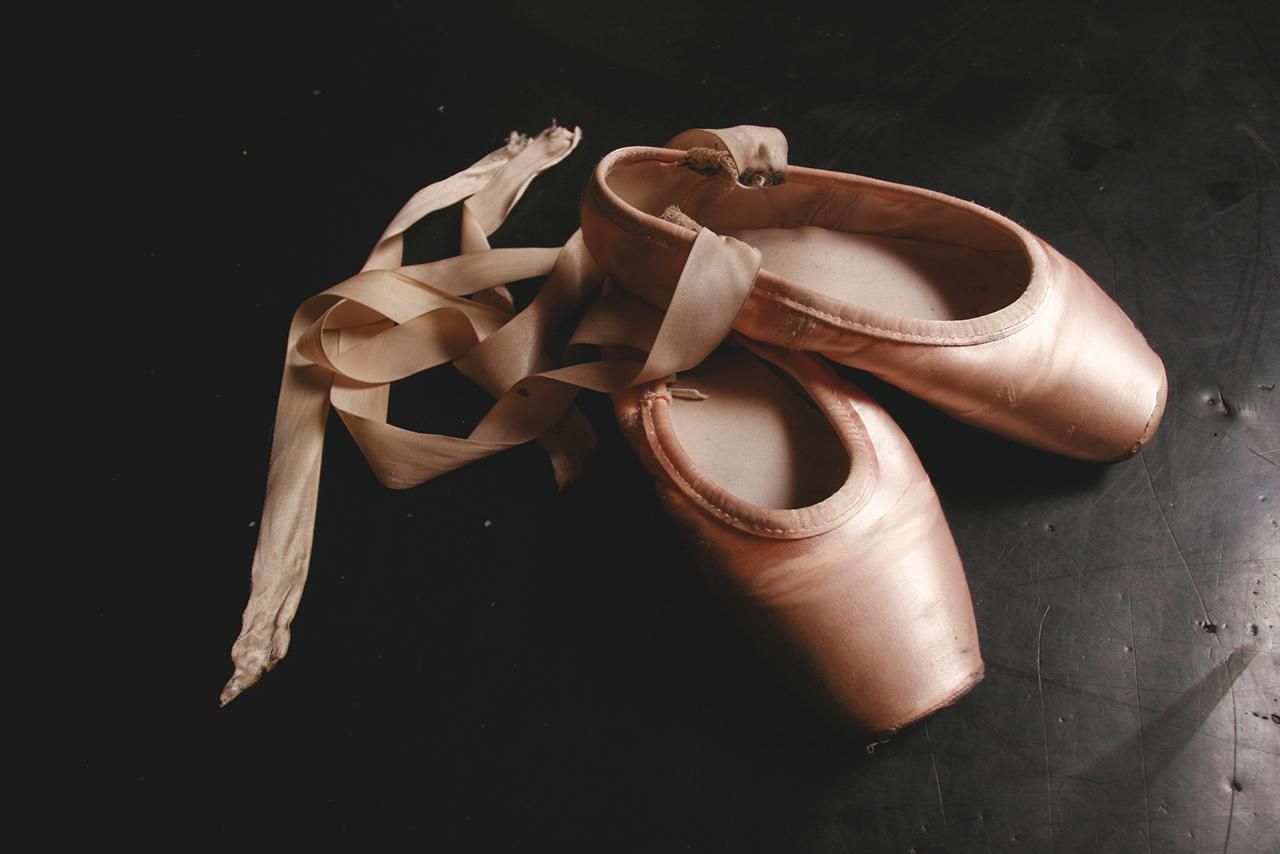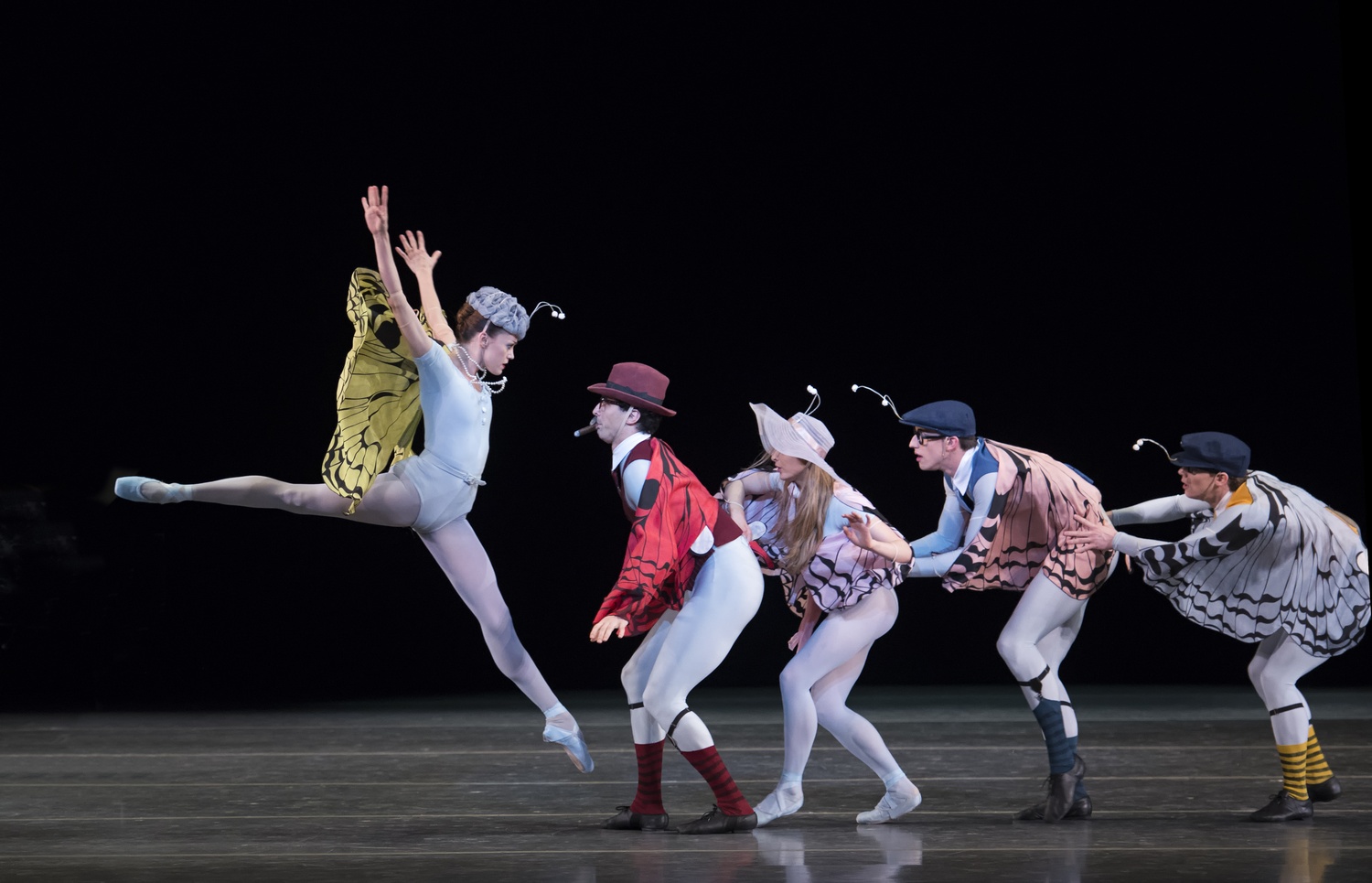Home>Events & Info>Ballet>When Do You Start Pointe In Ballet
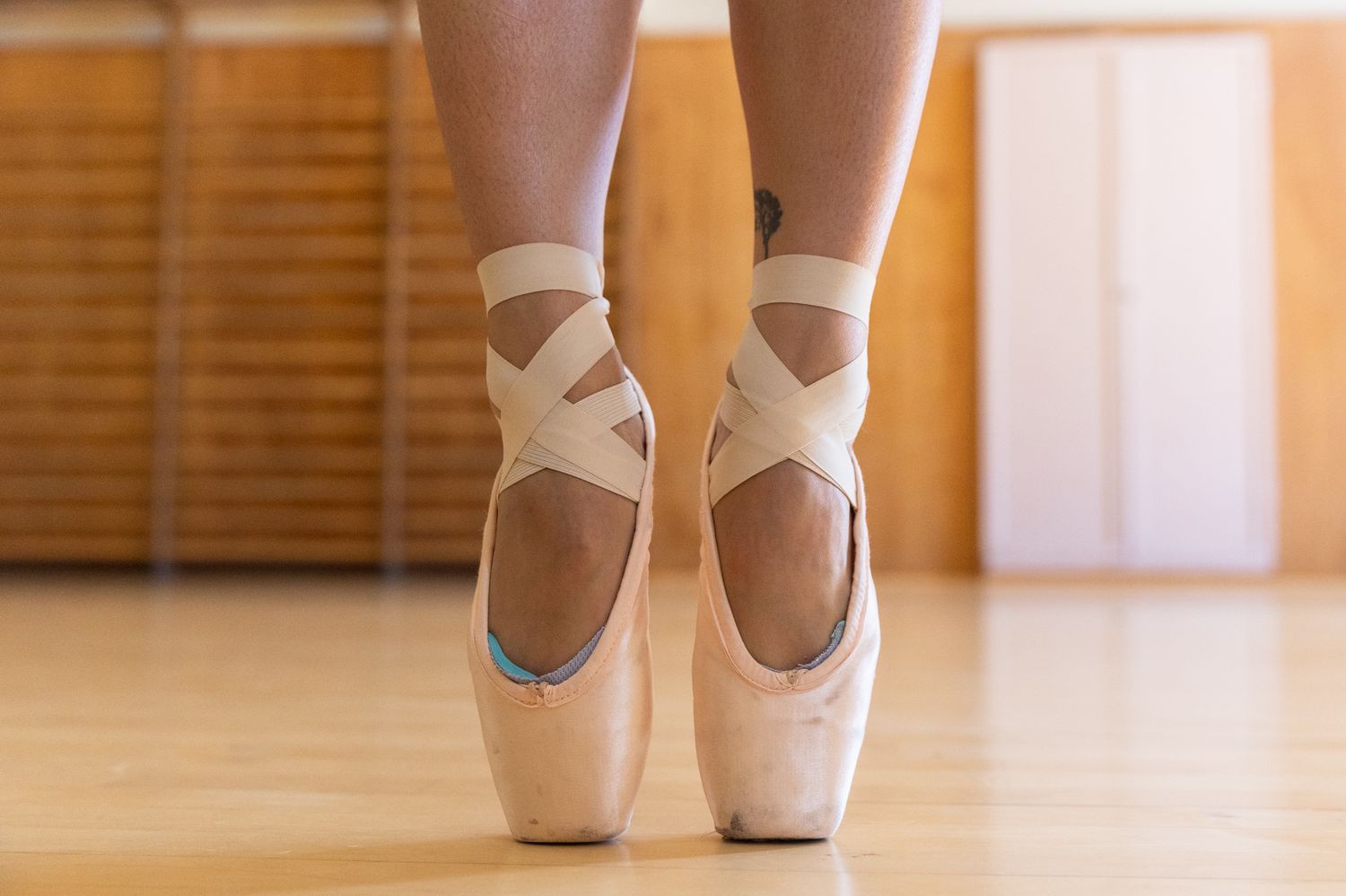

Ballet
When Do You Start Pointe In Ballet
Modified: January 22, 2024
Find out when you can start pointe in ballet. Discover the age and prerequisites required to begin your ballet journey.
(Many of the links in this article redirect to a specific reviewed product. Your purchase of these products through affiliate links helps to generate commission for AudioLover.com, at no extra cost. Learn more)
Table of Contents
- Introduction
- Understanding Pointe Work in Ballet
- The Importance of Proper Technique
- Age and Physical Readiness for Pointe Work
- Technical Mastery and Strength
- Evaluating the Dancer’s Readiness
- Guidance and Recommendations from Experts
- Training and Preparation for Pointe Work
- Transitioning to Pointe Shoes
- Ensuring Injury Prevention and Safety
- Conclusion
Introduction
Pointe work in ballet is a captivating and iconic aspect of the dance form. It is a technique that showcases the grace, strength, and artistry of a ballet dancer as they dance on the tips of their toes. Many aspiring ballet students dream of the day they can don their first pair of pointe shoes and join the ranks of the ethereal ballerinas who have come before them.
However, pointe work is not something to be taken lightly. It requires years of training, rigorous technique, and physical readiness to ensure the safety and well-being of the dancer. The journey to pointe is an exciting one, but it must be approached with caution and proper guidance.
In this article, we will delve into the world of pointe work in ballet, exploring the factors that dictate when a dancer is ready to start dancing on pointe. We will discuss the importance of proper technique, the role of age and physical readiness, and the evaluation process conducted by experts. Additionally, we will explore the necessary training and preparation required before transitioning to pointe shoes, as well as the importance of injury prevention and safety.
Whether you are a ballet student, teacher, or simply someone curious about this exquisite art form, this article will provide valuable insight into the world of pointe work in ballet and what it takes to embark on this extraordinary dance journey.
Understanding Pointe Work in Ballet
Pointe work in ballet is a technique that allows dancers to dance on the tips of their toes, supported by specially designed pointe shoes. It is a visually stunning and physically demanding aspect of ballet that requires a high level of strength, control, and technique.
The concept of dancing on pointe originated in the early 19th century, when the technique was developed to create the illusion of weightlessness and grace. Pointe work allows dancers to achieve a heightened sense of delicacy and precision in their movements, adding an element of ethereal beauty to classical ballet repertoire.
When a dancer dances on pointe, the majority of their body weight is supported by the toes, specifically the metatarsal bones. This requires a great deal of strength and balance, as well as proper alignment and placement of the feet and ankles. The dancer must engage their core muscles, stabilize their legs, and maintain a sense of control and balance while executing various movements.
Pointe work incorporates a wide range of movements, including balances, turns, jumps, and intricate footwork. The dancer must seamlessly transition between movements, maintaining flow and artistry while on pointe. It is a true test of strength, technique, and endurance.
It is important to note that pointe work is not suitable for every ballet dancer. It requires a high level of technical proficiency, as well as physical readiness to avoid potential injuries. Dancers must undergo a thorough evaluation process to determine their readiness for pointe work, taking into consideration factors such as age, strength, technique, and skeletal maturity.
Overall, understanding the intricacies of pointe work in ballet helps us appreciate the skill and dedication that dancers bring to this art form. It is a mesmerizing display of beauty, strength, and grace, and a testament to the incredible athleticism of ballet dancers.
The Importance of Proper Technique
In the world of ballet, proper technique is the foundation for everything a dancer does, and this especially holds true for pointe work. The importance of honing and mastering technique cannot be overstated, as it serves as the key to executing movements safely, efficiently, and with artistry.
Proper technique in pointe work starts from the very basics, such as correct alignment of the body, alignment of the feet and ankles, and proper placement of the weight. The dancer must learn to engage the core muscles to create stability and support throughout the body. Attention to detail, such as turnout of the legs from the hips and maintaining a lifted posture, is crucial in achieving a strong and controlled pointe technique.
When a dancer has a solid foundation of technique, it allows for fluidity and ease in movements while on pointe. It enables them to execute complex sequences with precision and grace, creating a visually captivating performance.
Besides aesthetic considerations, proper technique is crucial for injury prevention. Dancing on pointe puts a tremendous amount of stress on the feet, ankles, and legs. Without proper technique, a dancer may place excessive strain on these areas, leading to stress fractures, tendonitis, and other potentially debilitating injuries.
Additionally, proper technique allows a dancer to develop the necessary strength and endurance required for pointe work. The intricate footwork, quick transitions, and sustained balances all rely on a strong technical foundation. It enables the dancer to safely navigate the demands of pointe work and maintain the integrity of their movements.
Aspiring pointe dancers should always prioritize their technique in their training. Regular ballet classes, focusing on foundational technique and strengthening exercises, are essential in developing the necessary skills for pointe work. Working closely with knowledgeable and experienced ballet instructors who emphasize correct technique is instrumental in the dancer’s progression.
Ultimately, proper technique is the backbone of pointe work in ballet. It not only enhances the aesthetics and artistry of the dance but also ensures the longevity and safety of the dancer’s career. By dedicating time and effort to cultivating proper technique, dancers can unlock the full potential of their pointe work and achieve breathtaking performances on stage.
Age and Physical Readiness for Pointe Work
The decision of when to start pointe work in ballet is not solely based on age, but it does play a significant role in determining the dancer’s physical readiness. Starting pointe work too early can increase the risk of injury and hinder proper technical development, while waiting too long can potentially result in missed opportunities for skill refinement.
Generally, ballet teachers and professionals agree that the dancer should be at least 11 or 12 years old before beginning pointe work. This is because the bones in the feet, ankles, and legs need time to develop and strengthen, reaching a level of maturity that can support the demands of dancing on pointe. The growth plates in the feet should be closed or nearly closed to minimize the risk of damage.
However, it is essential to note that age alone is not the sole determinant of readiness. Each dancer’s physical development and technique must be taken into account. Dancers who have been training consistently and have developed a strong technical foundation may be ready for pointe work earlier than others their age. On the other hand, dancers who may be older but lack the necessary strength, control, or technique may need more time to prepare.
Physical readiness for pointe work extends beyond age and encompasses various factors. One important consideration is proper alignment. Dancers should have a good turnout (external rotation of the hip), as this helps distribute weight evenly on the toes and protects the joints. Adequate flexibility in the feet and ankles is also necessary to achieve the desired pointe position and execute movements with precision.
Additionally, dancers should possess sufficient strength in the feet, ankles, legs, and core muscles to support their body weight while on pointe. This includes both static and dynamic strength, as pointe work requires the ability to maintain balance and control during movements and turns.
An evaluation by a qualified ballet professional is crucial in assessing a dancer’s readiness for pointe work. This evaluation often involves observing the dancer’s technique, strength, and alignment, as well as assessing their physical maturity. The instructor may conduct specific tests or exercises to gauge the dancer’s abilities and identify areas that need further development before starting pointe work.
Ultimately, the decision of when to start pointe work should prioritize the dancer’s safety and well-being. It is essential to trust the guidance of experienced ballet instructors and professionals who can assess the dancer’s physical readiness accurately. Starting pointe work at the appropriate time allows the dancer to progress safely and confidently on their journey to becoming a proficient pointe dancer.
Technical Mastery and Strength
Technical mastery and strength are vital components of successful pointe work in ballet. Dancing on pointe requires a high level of technical proficiency, as well as the physical strength to execute movements with control and grace.
First and foremost, dancers must have a solid foundation of ballet technique before embarking on pointe work. This includes understanding and executing correct alignment, posture, turnout, and placement of the feet and legs. Without a strong technical base, it becomes challenging to maintain proper balance and control while dancing on pointe.
Furthermore, pointe work demands a high level of strength and stability in the feet and ankles. Dancers must have strong intrinsic foot muscles to support the arches and distribute weight evenly on the toes. This strength is built through specific foot exercises and repetitive relevés (rising onto the balls of the feet).
The strength of the ankles is also essential in supporting the body weight while dancing on pointe. Ankle-strengthening exercises, such as rises, balances, and theraband exercises, help develop the necessary stability and control required for pointe work.
In addition to foot and ankle strength, overall body strength plays a crucial role in executing movements on pointe. Core strength is particularly important as it provides stability and alignment throughout the body. Strong core muscles allow dancers to maintain balance, execute turns with control, and move with fluidity while on pointe.
Leg strength is another key component of successful pointe work. Dancers must have strong leg muscles to control the height and quality of their movements. This strength is developed through regular ballet training, including exercises that target the quadriceps, hamstrings, and calf muscles.
Technical mastery and strength go hand in hand when it comes to pointe work. The dancer’s ability to execute movements correctly and with control is directly influenced by their physical strength and conditioning. Regular training and conditioning not only improve technique but also help prevent injuries that can occur due to the demands of pointe work.
It is important to note that building strength for pointe work takes time. Dancers should gradually increase the intensity and duration of their training to avoid overexertion and allow their bodies to adapt to the demands of pointe work. Patience and persistence are key.
A qualified ballet instructor can guide dancers in developing their technical mastery and strength for pointe work. They can provide specific exercises and training recommendations based on the individual dancer’s strengths and weaknesses. It’s important to work closely with an instructor to ensure proper technique and safe progression.
Ultimately, technical mastery and strength are fundamental to successful pointe work. Dancers who have honed their technique and built the necessary strength can confidently perform on pointe, captivating audiences with their grace, precision, and artistry.
Evaluating the Dancer’s Readiness
Evaluating a dancer’s readiness for pointe work in ballet is a crucial step in ensuring the dancer’s safety and well-being. It involves a comprehensive assessment of the dancer’s technique, strength, physical development, and overall readiness to take on the challenges of dancing on pointe.
One of the key aspects of evaluating a dancer’s readiness is observing their technique. The dancer should demonstrate a strong understanding of proper alignment, posture, and placement of the feet and legs. Their movements should be controlled and precise, reflecting a solid foundation of ballet technique.
Additionally, attention is given to the dancer’s strength and physical abilities. Strength in the feet and ankles is particularly important for supporting the body weight while on pointe. The dancer should have adequate intrinsic foot and ankle strength, as well as a solid core and leg strength to execute movements with control and stability.
Physical development also plays a role in determining a dancer’s readiness for pointe work. The growth plates in the feet should be closed or nearly closed to minimize the risk of injury. An evaluation of the dancer’s skeletal maturity is usually conducted to ensure that the foot and ankle structures are sufficiently developed to handle the demands of dancing on pointe.
It is crucial to assess the dancer’s understanding of the commitment and responsibility that comes with pointe work. Starting pointe requires dedication, discipline, and a willingness to adhere to the necessary training and conditioning. A dancer who is mentally prepared and demonstrates a strong work ethic is more likely to succeed in their pointe training.
During the evaluation process, it is common for a ballet instructor or professional to conduct specific tests and exercises. These may include relevés, rises onto demi-pointe, balance tests, and assessments of foot flexibility and strength. The purpose of these evaluations is to gauge the dancer’s abilities and identify any areas that may require further development before embarking on pointe work.
Ultimately, the evaluation process is a collaborative effort between the dancer and the instructor. It is important for dancers to communicate any concerns or questions they may have and be open to receiving feedback from their instructor. This partnership ensures that the dancer’s readiness for pointe work is thoroughly assessed and that they are prepared for the challenges that lie ahead.
It is worth noting that every dancer’s journey to pointe work is unique, and readiness can vary. Some dancers may progress more quickly, while others may require additional time and training. The evaluation process helps determine the best course of action for each individual dancer, ensuring that they start pointe work when it is safe and beneficial for their growth as artists.
Guidance and Recommendations from Experts
When it comes to starting pointe work in ballet, seeking guidance and recommendations from experts is essential. Ballet instructors, professional dancers, and medical professionals with experience in ballet can provide valuable insights and advice to ensure a dancer’s safe and successful journey into pointe work.
Ballet instructors play a crucial role in guiding dancers towards pointe readiness. They have a deep understanding of the technical requirements and training progression necessary for pointe work. Instructors can assess a dancer’s technique, strength, and overall readiness through regular class observation and individual feedback. They can provide targeted exercises and corrections to help the dancer develop the necessary skills for pointe work.
Professional ballet dancers who have experience dancing on pointe can also offer valuable guidance. They have firsthand knowledge of the challenges and demands of pointe work and can share their insights and tips with aspiring dancers. They can provide guidance on technique, conditioning exercises, and proper pointe shoe fitting, helping dancers navigate the journey to pointe with confidence and expertise.
Medical professionals who specialize in dance medicine can offer valuable input on a dancer’s physical readiness for pointe work. These experts can assess the dancer’s growth and development, as well as their potential risk factors for injury. They can provide guidance on injury prevention, proper nutrition, and conditioning exercises to ensure the dancer’s overall well-being and longevity in their dance career.
It’s important for dancers and their parents or guardians to actively seek out and listen to the advice of these experts. Embracing the guidance of knowledgeable professionals not only ensures the dancer’s safety but also enhances their training and performance. It is recommended to consult with experts as early as possible when considering pointe work, allowing for comprehensive evaluations and appropriate guidance from the beginning of the training journey.
Additionally, dancers should be open to continuing education and seek out opportunities to attend workshops, master classes, and summer intensives led by renowned ballet professionals. These experiences provide valuable exposure to different teaching methods and styles, allowing for growth and enrichment in the dancer’s training.
Above all, patience and trust in the guidance from experts are crucial. Every dancer progresses at their own pace, and it’s important to respect and honor the individual journey. Professionals with extensive experience in ballet understand the nuances and requirements of pointe work and can provide the necessary support and guidance to ensure a safe and fulfilling experience.
By seeking advice from experts, dancers can navigate their journey into pointe work with the knowledge, confidence, and support they need to excel in their ballet training.
Training and Preparation for Pointe Work
Training and preparation for pointe work in ballet involve a dedicated and systematic approach to develop the necessary strength, technique, and readiness for dancing on pointe. It is a gradual process that requires diligent training, conditioning, and guidance from qualified instructors.
One of the primary focuses of training for pointe work is ballet technique. Dancers must have a strong foundation in classical ballet, including proper alignment, posture, turnout, and coordination. Regular ballet classes are essential to reinforce technique, as well as to develop the strength and control needed for pointe work.
In addition to regular ballet classes, dancers will benefit from specific pointe preparation classes or exercises. These classes often focus on strengthening the feet, ankles, and legs, and include exercises such as releves, rises, and foot articulation. Pointe prep classes can also include barre and center work that emphasize coordination, balance, and stability.
Strength and conditioning play a crucial role in pointe preparation. Dancers should incorporate exercises targeting specific muscle groups, such as foot intrinsic exercises, ankle strengthening exercises, and core and leg exercises. Pilates, resistance band work, and other cross-training activities can also enhance overall strength and conditioning, complementing the dancer’s ballet training.
Gradually introducing pointe work is essential to build strength and adapt to dancing on pointe. Dancers may start with exercises at the barre, focusing on proper alignment, balance, and control. As strength and proficiency increase, dancers progress to doing more complex movements, turns, and jumps while on pointe.
It’s crucial to note that pointe work should always be supervised by a knowledgeable instructor. The instructor will provide corrections, feedback, and support during pointe training, ensuring the dancer’s safety and proper technique. It is also common for instructors to periodically assess the dancer’s progress and determine when they are ready for more advanced pointe work.
In addition to physical training, dancers should also pay attention to injury prevention and self-care. Proper warm-up routines, stretching, and cooling down after classes are essential to prevent injuries and maintain flexibility. Adequate rest and recovery time are also crucial in preventing overuse injuries and allowing the body to repair and strengthen.
Lastly, dancers should be mindful of proper pointe shoe fitting and care. Working with an experienced fitter to find the right size, style, and brand of pointe shoes is essential. Proper maintenance of pointe shoes, including darning and cleaning, helps ensure their longevity and performance.
Overall, training and preparation for pointe work require dedication, discipline, and a focus on technique, strength, and readiness. Through consistent training, proper conditioning, and guidance from qualified instructors, dancers can develop the necessary skills to dance on pointe safely and confidently.
Transitioning to Pointe Shoes
The transition to pointe shoes is an exciting and significant milestone for ballet dancers. However, it is a process that should be approached with caution and proper guidance to ensure a smooth and successful transition.
Before beginning pointe work, dancers should have a solid foundation of ballet technique and strength. They should have demonstrated a high level of control, proper alignment, and excellent foot and ankle strength during their pre-pointe training. Once their instructor determines they are ready, the dancer can begin the process of transitioning to pointe shoes.
One of the first steps in transitioning to pointe shoes is finding the right fit. Working with an experienced pointe shoe fitter is crucial to ensure proper sizing and style selection. The fitter will measure the dancer’s feet, assess their arch shape, and consider any specific foot characteristics to find the most suitable pointe shoes. It is important to note that the fit may evolve over time, and periodic reassessment may be necessary.
Once the dancer has obtained their pointe shoes, it is important to break them in gradually. Starting with shorter periods of wearing the shoes during class and gradually increasing the duration over time allows the dancer’s feet and body to adjust to the demands of pointe work. This gradual process helps prevent discomfort and potential injuries that can result from sudden and excessive use of the shoes.
Proper pointe shoe technique is crucial for a successful transition. Dancers should focus on maintaining proper alignment, engaging the core, and activating the muscles in the feet and ankles. Paying attention to proper weight distribution on the feet and developing a strong pointe technique will help dancers perform movements comfortably and with grace.
It is essential to continue regular ballet training, incorporating pointe work into classes and rehearsals. Pointe work should not replace standard ballet technique training but rather complement and enhance it. Instructors will continue to provide corrections, guidance, and exercises specific to pointe work to help dancers further develop their technique and artistry.
Throughout the transition, dancers should listen to their bodies and communicate any discomfort or pain to their instructors. Addressing any issues promptly can help prevent injuries and ensure the proper adjustments are made to accommodate the dancer’s needs.
Transitioning to pointe shoes also requires proper care and maintenance. Dancers should ensure their shoes are properly broken in and that ribbons and elastics are sewn securely. Taking care to clean and dry the shoes after each use helps maintain their integrity and extend their lifespan.
Remember, the transition to pointe shoes is an individual journey, and each dancer’s progression will vary. It is important to trust the process, be patient, and recognize that progress takes time and consistent effort. By following proper technique, seeking guidance from instructors, and listening to their bodies, dancers can make a successful and rewarding transition to dancing on pointe.
Ensuring Injury Prevention and Safety
Ensuring injury prevention and safety is of paramount importance when engaging in pointe work in ballet. Dancing on pointe puts significant demands on the feet, ankles, and legs, and it is essential to take proactive measures to minimize the risk of injuries and promote long-term physical well-being.
Proper technique and alignment play a crucial role in injury prevention. It is essential for dancers to consistently focus on maintaining correct posture, alignment of the feet and legs, and engaging the core muscles to provide support and stability. Paying attention to proper turnout and avoiding sickling (inward rolling of the ankles) can help prevent unnecessary stress and strain on the feet and ankles.
Gradual progression is key to injury prevention in pointe work. Dancers should gradually increase the duration and intensity of their pointe work to allow their bodies to adapt to the demands. Pushing too hard or advancing too quickly can lead to fatigue, overuse injuries, and unnecessary stress on the muscles and joints.
Regular conditioning and strength training are crucial in injury prevention. Dancers should have a comprehensive strength and conditioning program that targets the muscles used in pointe work, including the feet, ankles, legs, and core. This training helps build the necessary strength and stability to support the body while on pointe and reduces the risk of muscle imbalances and weaknesses.
Proper warm-up and cool-down routines are vital in injury prevention. Dancers should engage in dynamic warm-up exercises that increase blood flow, warm up the muscles, and prepare the body for the demands of pointe work. Stretching at the end of the session helps maintain flexibility and prevent muscle tightness that can lead to injuries.
Regular rest and recovery are essential for preventing overuse injuries. Adequate rest days and proper sleep are crucial for the body to repair and rebuild. Dancers should listen to their bodies and take breaks when needed to avoid excessive fatigue and burnout.
Proper pointe shoe fit and maintenance are also crucial for injury prevention. Working with a professional fitter to ensure correct sizing, suitable style, and appropriate support can help minimize discomfort and reduce the risk of blisters, bunions, and other foot injuries. It is important to regularly inspect the shoes, replace them when worn-out, and ensure that ribbons and elastics are secure.
Regular communication with instructors and seeking proper guidance is vital for injury prevention. Instructors can provide valuable feedback, corrections, and modifications to ensure safe and effective pointe training. It is important for dancers to report any discomfort, pain, or concerns to their instructors promptly to address potential issues and make necessary adjustments.
Lastly, maintaining overall physical and mental well-being is essential for injury prevention. Proper nutrition, hydration, and a healthy lifestyle contribute to maintaining a strong and resilient body. Dancers should also prioritize cross-training and incorporate activities that promote strength, flexibility, and balance outside of ballet to prevent muscle imbalances and enhance overall performance.
By following these injury prevention protocols, dancers can enjoy the benefits of pointe work while minimizing the risk of injuries. Building a strong foundation, listening to the body, and practicing proper technique are crucial in creating a safe and sustainable pointe journey.
Conclusion
Embarking on the journey of pointe work in ballet is a significant milestone for dancers. It requires dedication, discipline, and a strong foundation of technique and strength. Starting pointe work at the appropriate time, with proper training and guidance, is crucial for the dancer’s safety and success.
Throughout this article, we have explored various aspects of pointe work, including the importance of proper technique, age and physical readiness, evaluating readiness, and the role of guidance from experts. We have discussed the training and preparation required, the transition to pointe shoes, and the crucial need for injury prevention and safety. Each step along this journey plays a critical role in developing a dancer’s skills, artistry, and physical well-being.
It is important to remember that pointe work is not a goal to be rushed but a process that requires patience and persistence. Every dancer progresses at their own pace, and the readiness for pointe work may vary. Proper assessment, guidance from experienced professionals, and open communication with instructors are essential in ensuring a successful transition into dancing on pointe.
As dancers progress on their pointe journey, they must prioritize proper technique, strength training, and injury prevention. They should always listen to their bodies, not push beyond their limits, and seek guidance when needed. The ultimate goal is to develop the necessary skills, strength, and artistry to execute movements with grace and precision while protecting their physical well-being.
In conclusion, pointe work is a captivating and demanding aspect of ballet that showcases the beauty and athleticism of dancers. It is an art form that requires dedication, technique, and physical readiness. By following the guidance of experts, taking care of their bodies, and respecting the progression of their own journey, dancers can embark on a fulfilling and successful pointe experience. As they dance on the tips of their toes, they bring to life the ethereal beauty and artistry that defines this timeless and enchanting dance form.


